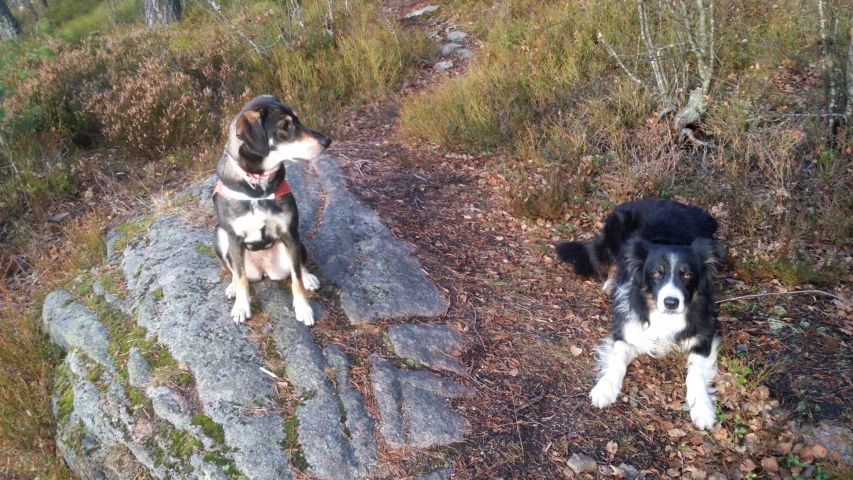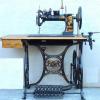-
Posts
1,591 -
Joined
-
Last visited
Content Type
Profiles
Forums
Events
Blogs
Gallery
Everything posted by Trox
-

Can Anybody Identify The Maker Of This Bech Splitter?
Trox replied to Logans Leather's topic in Leather Tools
Hi, Thank you. I always try google before anything else. I have tried the Osborn company, Campbell Randall, Bruce Johnson and many more with no luck. I sent my old blade for sharpening and the company ruined it. I have found one place in Germany that has a new blade for it. However, they charge more for a blade than a new # 86 six inch splitter will cost me in the USA. I checked out the Montana leather company web site and they do not sell any splitters, except the cheap Tandy (toy) splitter. I doubt they have blades for a splitter they do not sell. Thank you anyway, my search continuous- 12 replies
-
- leather splitter
- splitter
-
(and 6 more)
Tagged with:
-
All you need is some leather and you are good to go
-

Can Anybody Identify The Maker Of This Bech Splitter?
Trox replied to Logans Leather's topic in Leather Tools
Hi, this is a bit of topic; you mention the Osborn # 86 eight inch blades was commercially available. Do you know where they are? I need one for my 8 " splitter and I cannot get hold of any. In advance thanks Tor- 12 replies
-
- leather splitter
- splitter
-
(and 6 more)
Tagged with:
-

Cobra Class 14 Splitter: Day One Video, Plus Photos
Trox replied to SWFLholsters's topic in Leather Tools
Very nice machine and setup, I wish I could afford one. What is the weight of this splitter head, I guess the the shipping will be a killer alone. (I am based in Norway) Should you not be splitting only two ounces a split, not to compress the roller springs to much?. I see in the video you split more than that and it preforms well even so. I think you it will work even better if you split of only two ounces at the time. -
Hi, It sounds like a timing issue. The timing of the needle and the hook is ether to early or too late, the distance between the needle and hook tip can be wrong too. Check if the needle hits in the center of the feed dog and if the feed dog is in the center of the needle plate. The feet's can also be adjusted if the needle hits it, thats something you can do your self (and start with this matter). The other adjustments are not something a beginner can do himself, you better leave them to a mechanic . A 180 needle is the largest needle this machine takes (or 200 is, I am not sure, and you are not telling its subclass number), this is a upholstery class machine designed for lighter thread sizes. Although this is a very fine machine, you might consider a heavier rating machine if you are using those heavy threads. If you are going to use this machine at it top limit it has to be properly adjusted. These kinds of error are common when you use a machine at its top limits. This machine is made for use with a size 130 needle, even if its should be able to handle the 180, it is not in its comfort zone. Trox It will be a smart move if you are going to sew with heavy threads.
-
Look for a Mayan doomsday cracker...you still got some hours left.
-
I guess Bob got this one right.
-
I missed the part about the glue, If it sews fine without. Yes, then you got your answer. I use German "snell" glue or semi fast contackt glue (Kôvulfix). I have never had any problems with glue, However, I have seen others post about it. Trox
-
Yes if your work moves it can happen.
-
Bob has a nice threading video on youtube. Change the needle for a new right size and adjust the tension on the top to get the loops inside your work. If necessary adjust the bobbin tension too. If it still will not sew well report back to us. It is probably just a tension problem. However, when you said you had this machine for ten years I was certain you knew its tension adjustments by now. Thats why I talked about other reasons. You say you get your loops when you turn the work? remember to only move your work when the needle is all the way down or this can happen. It can also happen when you have to little foot pressure. Trox
-
When a mechanic do a service he/she has to sew the machine off, it is not enough to statically adjust the timing and other settings. I see that many have problems with machines after having them serviced, I would not pay for a job half done. I first seems like the bobbin tension is wrong, however it might be other reasons for this too. My Pfaff machine acted just like you described it, some stitches was OK and other had loose loops on the bobbin side. The reason for this was wrong needle hook timing. Call the mechanic and complain, it should not be like this. Trox
-
Congratulations Darren.
-
Hi James, No it is not the same needle position to the hook, It is a needle feed machine and the needle moves with the stitch length. Or when you changes from forward to reverse. So if it is knocked out of timing a bit it can still work good forward and miss stitches in reverse. The timing of the hook position is different in zero stitch length than in maximum reverse length. "The position hook tip should be 0,5 mm behind the right needle edge, when the upper edge of the needle eye is flush with the lower edge of the hook tip". See pic 9. This is data for the 205-64 machine, I send you the download link in an PM. You can read how it is done on that machine and compare yours settings to it. The pic 1 is the loop stroke position set with the special tool at zero stitch length. The pic 2 is the distance between the needle and the needle guide; 0.2 mm with Schmetz 328LR size 200 (when the shuttle is removed) The down load link is available in three days and sent to you in a PM. Good luck Trox
-
Joke aside, on older Adler class 4 and 5 (and Singer 45K) lock stitch machines they sewed with waxed linen and had gas apparatus for heating. I have seen pictures of it in old manuals/part lists. The shuttle was heated. Trox
-
Sure unwaxed linen works like a champ in all machines. With wax you must use a propane gas heater in your wax pot and trow the pedal to the metal. (and be ready for more butt pains) :rofl: Thanks Trox
-
Hi James, I bbelievethe cut outs in the flat bed stands always becomes too small. You always need to sew a big project that not fits the cut out, or it is no room to turn it. Like a big bag or something. I have two stands like that and I hate them. There is a other way to do it, it depends of your table legs. Look at this Japanese youtube video; I do not understand what they talk about, but the pictures shows what I mean. Cut the table in a L shape like in this video. You might have to remove some of the left K legs table support, nevertheless, this is much better than a regular U shaped cut out. Then put a paper sheet over the motor bracket and draw off the holes; then you have something to mark where you need to drill holes in the table. Put the machine head on the table and make sure it is positioned where it is room for the motor and reducer underneath. Drill holes and cut out the hole for the V belt, do not mount it yet. Turn the table upside down and mount the motor/reducer and all cables underneath first. It will save you a great deal of work doing it this way, espesiaespeciallyis a heavy clutch motor. Good luck Trox
-
Hi James how are you? You have owned that 105 for a long time now, if you have not had it serviced now is the time to do so. If you are using a new Schmetz needle (the right size for adjustments; 328LR metric size 200) and not using any thread oil (some makes the thread loop stick to the shuttle), it`s probably a timing issue. I tried to write down the way to do it here, however it takes to long. You better get hold of a service manual and read it your self. I do not have one for the 64 subclass, only for all the other subclasses of the 104/105. There are some manuals available on http://www.sew24.blogspot.no/p/downloads.html too. You can also ask Thomas Brikhoff (head of DA spare parts) if he has the 64 service manual. Or you can probably use the 205-64 service manual, it has the same feed and shuttle as yours (same machine in new wrappings). It gives you a general idea anyway. You do not need all the special service attachments to adjust your timing (as they say you do in the manual). The important thing is that the hook tip is over the needle eye in the loop stroke position. And also is so with tensioned thread in it; there is a play between shuttle and shuttle driver. The position of the shuttle in the loop stroke when the machine is turned by hand (without thread) will be different from the real sewing conditions. (with thread and tension on it, the shuttle will move against one side of the shuttle driver, different timing reading) I have your Email address and can send you the one I have for the 204-64 and 205-64. Pay attention to the adjustments rule nr. 5; producing reverse stitches. A quick way to check the timing is to move the needle gradually down wards in the needle bar and try it. Move it down a bit, lock and try sewing, repeat if necessary. This instead of adjusting the needle bar up and down, if it works you know where the error is. When you do a service do all the adjustments in the right order. A good result may depend of it, start with rule 1 and go true them all. Clean and oil. Good luck PS. do your email server support big down loads 3,42 MB? If not I can load it up to a web link you can download it from. Good luck Trox
-

Mad Woman With Hammer =Broken 206 Consew!
Trox replied to CowboyBob's topic in Leather Sewing Machines
To get that head fixed he should have called dr. Phil -
Randy, I sent you the email with the manual..
-
Hi, send me your email in an PM (personal message, and not in this post, because of spammers) and I send you my kopi in a pdf format. Its only 210 kb big, even Gmail can handle it.
-
-
Hi, I guess it is a Kochs Adler old class 20, although I have seen this model with other names too. The needle system is difficult when you have no class number. The later Adler class 20 used system 794 (69 mm long) and system 1000 for the the high lift subclass (I do not know how long it is, however, longer than the 794). As far as I know the system 1000 is the longest needle available today, (without special orders) I would ask Schmetz at SCHMETZneedles.com. Take pictures of both sides of the needle in high resolution and measure it accurately or send them the needle. You can also ask Thomas Brinkhoff Head of spare parts business Dürkopp Adler AG http://www.sew24.blogspot.no/ Good luck
-
Do you need a big industrial stapler to install these, or is it small (less expensive) hand held models available for sale. These sure look more professional than the rapid staples. Thanks Trox
-
You are welcome.








